
EXPO SCHEDULE 2016
MONDAY - MAY 23, 2016
10:30 a.m. - 5:00 p.m.
Registration : Historic Inns Foyer
11:30 a.m. - 1:30 p.m.
Luncheon and Opening Plenary : Atrium
11:45 a.m. - 1:30 p.m. - Luncheon - Contractors Forum
Contractors Forum
Join a panel of representatives from various contractor and component manufacturers as they discuss the CFS framing industry from their perspective. The audience will be able to ask questions of the panel, as well as participate in the group discussions. This will be an interesting opportunity for contractors and engineers to share their project and industry issues, both common and unique, and will be enlightening to all attendees.
Panelists
- J.J Carter, Vice President and Owner - Allspan, Inc
- Michael Coakley, President - CJ Coakley
- Barry Unger, Owner - Panel Systems
- Ronnie Kennedy, Operations Manager - Performance Contracting, Inc
1:45 p.m. - 2:45 p.m. - Concurrent Sessions
Inspecting CFS Framing Not Just Left Up For Interpretation Anymore
Jeffrey M. Klaiman
ADTEK Engineers, Inc.
Up until now, exactly what was needed to be inspected on structural cold-formed steel project, and even to what frequency and standards it needed to be inspected, was up for individual jurisdictions to determine, if at all. While other industries developed standard inspection protocols, CFS framing was an open book, until now. Over the past several years, the AISI Committee on Framing Standards (COFS), with oversight from the AISI Standards Council, has worked hard to develop a "whole" document to cover the structural design of cold-formed steel framing. Released at the end of 2015, AISI S240, North American Standard for Cold-Formed Steel Structural Framing, represents more than the sum of the individual parts. In fact, one aspect that makes it greater than the sum of its parts is the brand-new chapter addressing the topic of quality control (QC) and quality assurance (QA). This presentation explores the new inspection requirements of this new standard, with special focus on these new QC and QA provisions.
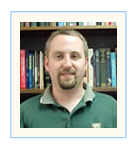 Jeff Klaiman has over 20 years of experience in the construction industry. His responsibilities include building maintenance and engineering; on-site engineering for a concrete contractor; Manager of Technical Services and Versa-Truss Product Manager for Dale/Incor (national manufacturer of cold-formed steel framing products and systems), participation on American Iron and Steel Institute’s Committee on Specifications for the Design of Cold-Formed Steel Structural Members and Committee on Framing Standards; a member of the Light Gauge Steel Engineers Association for more than 10 years; ASTM International and the Steel Framing Alliance. Mr. Klaiman serves as chairman of the Standard Practices Subcommittee of the AISI Committee on Framing Standards and is also the president of the Mid-Atlantic Steel Framing Alliance. He is a past president of the Cold-Formed Steel Engineers Institute. In his position at ADTEK Engineers, Inc. as Principal in Charge of Specialty Engineering, Mr. Klaiman oversees the design and coordination of all cold-formed steel design documents. He also manages in-house staff in three offices for cold-formed steel framing design, develops project schedules, and coordinates quality control reviews with project managers on his team. Mr. Klaiman holds a bachelor’s degree in Civil Engineering from the University of Michigan, and an MBA from Eastern Michigan University.
Jeff Klaiman has over 20 years of experience in the construction industry. His responsibilities include building maintenance and engineering; on-site engineering for a concrete contractor; Manager of Technical Services and Versa-Truss Product Manager for Dale/Incor (national manufacturer of cold-formed steel framing products and systems), participation on American Iron and Steel Institute’s Committee on Specifications for the Design of Cold-Formed Steel Structural Members and Committee on Framing Standards; a member of the Light Gauge Steel Engineers Association for more than 10 years; ASTM International and the Steel Framing Alliance. Mr. Klaiman serves as chairman of the Standard Practices Subcommittee of the AISI Committee on Framing Standards and is also the president of the Mid-Atlantic Steel Framing Alliance. He is a past president of the Cold-Formed Steel Engineers Institute. In his position at ADTEK Engineers, Inc. as Principal in Charge of Specialty Engineering, Mr. Klaiman oversees the design and coordination of all cold-formed steel design documents. He also manages in-house staff in three offices for cold-formed steel framing design, develops project schedules, and coordinates quality control reviews with project managers on his team. Mr. Klaiman holds a bachelor’s degree in Civil Engineering from the University of Michigan, and an MBA from Eastern Michigan University.
Proof Load Field Testing
Gary Engleman
Simpson Strong-Tie Company Inc.
Post installed anchor proof Load field Testing should be conducted according to ASTM E488. We will learn the proper procedures of this criteria including when to use confined vs unconfined tests and how this looks on mechanical vs adhesive anchoring systems. Examples will be shown of real world testing of small diameter, large diameter, tension tests, shear tests as well as the specialized equipment and scenarios used in untraditional conditions. This class will finish off with a live demonstration to a tension load pull test to failure.
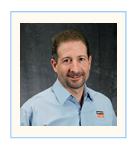 Gary Engleman started with Simpson Strong-Tie as the Mid-Atlantic Anchor Systems Technical Representative in June 2010. Gary has been involved with the post-installed anchor industry in Maryland, Virginia, and Washington, DC for over 25 years. Prior to coming aboard with Simpson Strong-Tie, Gary spent ten years developing relationships with distributors, engineers, and contractors as a Territory Manager for Powers Fasteners. Gary’s experience, product knowledge and understand of the anchor market earned him the prestigious Hough B. Oliphant Award in September 2011. Gary is currently the Senior Technical Representative for all Industrial, Commercial, and Infrastructure products and project in Maryland, Virginia, and Washington, DC. Gary provides training and testing for contractors as well as continuing education for the design community on behalf of Simpson Strong-Tie accredited through IACET and AIA. Associations Gary is involved with include; Mid-Atlantic Steel Framing Alliance, American Concrete Institute, International Concrete Repair Institute, and Architecture – Construction – Engineering Mentor Program. Within Simpson Strong-Tie, Gary is part of the National Sales and Marketing Alliance Committee and the Northeast Senior ICI Leadership Team where he takes on training and mentoring Technical Representatives throughout 24 states.
Gary Engleman started with Simpson Strong-Tie as the Mid-Atlantic Anchor Systems Technical Representative in June 2010. Gary has been involved with the post-installed anchor industry in Maryland, Virginia, and Washington, DC for over 25 years. Prior to coming aboard with Simpson Strong-Tie, Gary spent ten years developing relationships with distributors, engineers, and contractors as a Territory Manager for Powers Fasteners. Gary’s experience, product knowledge and understand of the anchor market earned him the prestigious Hough B. Oliphant Award in September 2011. Gary is currently the Senior Technical Representative for all Industrial, Commercial, and Infrastructure products and project in Maryland, Virginia, and Washington, DC. Gary provides training and testing for contractors as well as continuing education for the design community on behalf of Simpson Strong-Tie accredited through IACET and AIA. Associations Gary is involved with include; Mid-Atlantic Steel Framing Alliance, American Concrete Institute, International Concrete Repair Institute, and Architecture – Construction – Engineering Mentor Program. Within Simpson Strong-Tie, Gary is part of the National Sales and Marketing Alliance Committee and the Northeast Senior ICI Leadership Team where he takes on training and mentoring Technical Representatives throughout 24 states.
3:00 p.m. - 4:00 p.m. - Concurrent Sessions
Cold-Formed Steel - Understanding Manufacturer Provided Information
Jon-Paul Cardin, P.E.
American Iron and Steel Institute
This presentation will cover reading and using the information provided by cold-formed steel framing product manufacturers. We will make sense of the catalogs full of endless tables and data, and how this information relates to your project. We will answer questions like: How were these numbers developed? When do the tables apply to my conditions? What are EQ products on the market? What do all these footnotes mean?
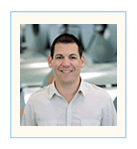 Jon-Paul Cardin, P.E., ran the engineering and quality control department for a major steel framing manufacturer before joining AISI’s construction codes and standards development staff. In such, he was in regular communication with engineers, contractors and inspectors regarding steel framing products and practices. He is a graduate of the University of Idaho with a B.S. Civil Engineering (Structural emphasis) and B.S. Mathematics. Jon-Paul is the author CFSEI TechNote on the splice design of steel studs, and has given 50+ presentations to engineering firms and structural engineering associations regarding CFS design. He is a member of the SEAW Spokane Chapter and ASCE-SEI chapter.
Jon-Paul Cardin, P.E., ran the engineering and quality control department for a major steel framing manufacturer before joining AISI’s construction codes and standards development staff. In such, he was in regular communication with engineers, contractors and inspectors regarding steel framing products and practices. He is a graduate of the University of Idaho with a B.S. Civil Engineering (Structural emphasis) and B.S. Mathematics. Jon-Paul is the author CFSEI TechNote on the splice design of steel studs, and has given 50+ presentations to engineering firms and structural engineering associations regarding CFS design. He is a member of the SEAW Spokane Chapter and ASCE-SEI chapter.
Designing with Premanufactured Assemblies:
Coordination Tips and Tricks During the Design Phase
Robert Warr, P.E.
Frameworks Engineering, LLC
This session will focus on collaborating with pre-manufactured assemblies at the beginning of the design including how BIM plays a role. How can CFS engineers and engineers-of-record listen to the contractor, owner, and architect to help guide the structural component selection in a manner that allows ease in assembly of off-site produced components of a build. Introduction of pre-manufactured bathroom units, wall systems, floor systems, and truss systems will be explored. Also, future considerations like pre-manufactured stair and elevator units will be introduced.
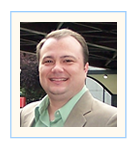 Robert Warr, P.E., is the owner of Frameworks Engineering, LLC and has been a Director and VP of two highly prominent metal producing manufacturing facilities, Mr. Warr has spent his career studying building structures and material designs in cold-formed steel framing. Mr. Warr continues his passion as a business leader today in his current role as VP of Operations for DSi. He has given back to the steel industry by serving on many committees including his role as (past) president of the Atlanta/SE Chapter of the Cold-Formed Steel Engineers Institute, the largest CFSEI chapter in the nation. Mr. Warr holds a Masters Degree in Structural Engineering from the University of Alabama at Birmingham. He is registered in 48 States and is a LEED Accredited Professional.
Robert Warr, P.E., is the owner of Frameworks Engineering, LLC and has been a Director and VP of two highly prominent metal producing manufacturing facilities, Mr. Warr has spent his career studying building structures and material designs in cold-formed steel framing. Mr. Warr continues his passion as a business leader today in his current role as VP of Operations for DSi. He has given back to the steel industry by serving on many committees including his role as (past) president of the Atlanta/SE Chapter of the Cold-Formed Steel Engineers Institute, the largest CFSEI chapter in the nation. Mr. Warr holds a Masters Degree in Structural Engineering from the University of Alabama at Birmingham. He is registered in 48 States and is a LEED Accredited Professional.
4:05 p.m. - Framing Competition
Framing Competition
Sponsored by
Mid-Atlantic Steel Framing Alliance
MASFA is pleased to sponsor and host the annual framing competition at this year’s joint Expo. Participants will consist of 5 teams of maximum 3 members each. Each group will build a small mock-up of a non-load bearing wall assembly with deflection track, bridging and sheathing, and a short knee wall with rigid base connection clips and concrete anchors. Each group will be timed on each of the stations as well as judged on quality of their work. Prizes will be awarded for the top 3 overall performing teams. This is sure to be a fun and entertaining time for both the participants and observers alike. The project is open to all registered Expo attendees. Registration forms will be available at the EXPO registration desk.
4:05 p.m. - Contractors Competition - Atrium
5:15 p.m. - Assemble in Historic Inn Foyer for Dinner Cruise
5:45 p.m. - 9:00 p.m. - Chesapeake Dinner Cruise on the Catherine Marie
TUESDAY - MAY 24, 2016
7: 00 a.m. - 4:00 p.m. - Registration - Historic Inn Foyer
7:30 a.m. - 9: a.m.
Breakfast
CFSEI Annual Meeting
CFS Framed Lateral Force-Resisting Systems Jeff Ellis, P.E., S.E., SECB
Simpson Strong-Tie Company Inc.
CFS framed lateral force resisting systems code requirements were first introduced into the 1997 UBC and served as the basis for their inclusion into the AISI Lateral Design standards, AISI S213. There are now several good references and tools to help in the design of these systems. While somewhat similar to wood framed design, there are some differences for which understanding is necessary to ensure proper compliance and performance of these systems. Many of the questions regarding cold-formed steel framed seismic force-resisting systems regard the various system choices, which floor framing system should be used, overturning restraint options, wall stud bracing design, the use of the overstrength factor, Ωo, and anchorage of the overturning restraint system to concrete. This presentation will discuss these aspects of design and include various examples including from the CFSEI Shear Wall Design Guide.
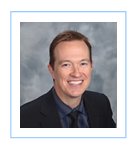 Jeff Ellis, PE, SE, SECB, Director of Codes & Compliance for Simpson Strong-Tie Company Inc. has more than 24 years of experience in the construction industry and manages the company codes and compliance efforts. Additionally, he is involved in research and development and provides support for existing product lines, including technical guidance for connectors, fastening systems, and lateral force resisting systems. He was a practicing design engineer for commercial, residential and forensic projects for more than 9 years prior to joining Simpson at the end of 2000. He is currently serving as President-Elect for the Structural Engineers Association of Southern California (SEAOSC), as a SEAOC Director, and as a member of the International Code Council Evaluation Service Board of Managers. He served two years as chairman of the SEAOSC Buildings At Risk Summit Committee, three years as a chairman of the AISI COFS Lateral Design Subcommittee, and four years on the Cold-Formed Steel Engineers Institute (CFSEI) Board of Directors, with one year as president.
Jeff Ellis, PE, SE, SECB, Director of Codes & Compliance for Simpson Strong-Tie Company Inc. has more than 24 years of experience in the construction industry and manages the company codes and compliance efforts. Additionally, he is involved in research and development and provides support for existing product lines, including technical guidance for connectors, fastening systems, and lateral force resisting systems. He was a practicing design engineer for commercial, residential and forensic projects for more than 9 years prior to joining Simpson at the end of 2000. He is currently serving as President-Elect for the Structural Engineers Association of Southern California (SEAOSC), as a SEAOC Director, and as a member of the International Code Council Evaluation Service Board of Managers. He served two years as chairman of the SEAOSC Buildings At Risk Summit Committee, three years as a chairman of the AISI COFS Lateral Design Subcommittee, and four years on the Cold-Formed Steel Engineers Institute (CFSEI) Board of Directors, with one year as president.
9:15 a.m. - 10:15 a.m. - Concurrent Sessions
Cold-Formed Steel Floor Trusses - How to Properly Utilize in Your Next CFS Framed Project
Bill Babich, P.E.
TrusSteel
The use of pre-fabricated CFS floor trusses is gaining in popularity due to the design flexibility they offer over other forms of floor construction. While CFS trusses are not new, their widespread use in floor systems is relatively new and has proven to be beneficial with the wide variety of situations that can be accommodated. This presentation will give an overview of CFS floor trusses and how they can successfully be utilized in your multi-story CFS construction projects. In addition to discussing the benefits of CFS floor truss construction, topics will include; loading conditions, framing conditions, interface with CFS walls, truss end conditions, truss-to-bearing connections, and proper specifications. After attending this presentation, the attendee will better appreciate the simplicity of using CFS floor trusses.
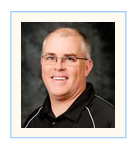 Bill Babich, P.E. is the Director of Engineering for TrusSteel. TrusSteel is a provider of Cold-Formed Steel (CFS) truss engineering and technology utilizing the proprietary TrusSteel system. He has been involved in the prefabricated truss industry for the last 30 years and specifically with the CFS industry since 1997. Bill is a member of the American Society of Civil Engineers (ASCE), the AISI Committee on Framing Standards (COFS) and the Cold-Formed Steel Engineers Institute (CFSEI). He is the past-chairman of the AISI COFS Truss Subcommittee and a past chairman of the CFSEI Executive Committee.
Bill Babich, P.E. is the Director of Engineering for TrusSteel. TrusSteel is a provider of Cold-Formed Steel (CFS) truss engineering and technology utilizing the proprietary TrusSteel system. He has been involved in the prefabricated truss industry for the last 30 years and specifically with the CFS industry since 1997. Bill is a member of the American Society of Civil Engineers (ASCE), the AISI Committee on Framing Standards (COFS) and the Cold-Formed Steel Engineers Institute (CFSEI). He is the past-chairman of the AISI COFS Truss Subcommittee and a past chairman of the CFSEI Executive Committee.
Anti-Terrorism Design Requirements for Cold-Formed Steel Framing
Nabil A. Rahman, Ph.D., P.E.
The Steel Network, Inc.
Understanding and implementing antiterrorism requirements into cold-formed steel framing (CFS) design can be a daunting task for a design engineer. In recent years, the DoD Unified Facilities Criteria program has developed documents to help walk a designer through the process; however, considerable confusion still exists. CFS can be used throughout the building as exterior and/or interior walls, as well as floor and roof systems. Join Nabil at this session as he explores blast protection of building envelopes, specifically exterior walls.
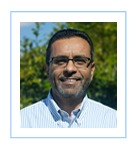 Nabil A. Rahman, Ph.D., P.E. is the Director of Engineering and R&D for The Steel Network, Inc. and a Principal at FDR Engineers in Durham, NC. He is the current chairman of ASCE-SEI Committee on Cold-Formed Steel Structures and a past chairman of the Cold-Formed Steel Engineers Institute (CFSEI). Dr. Rahman has vast experience in CFS design, product development, software development, as well as the analysis and protection of structures against extreme loads (progressive collapse, blast, Impact). He serves as a member of the Committee on Specification and Committee on Framing of the American Iron and Steel Institute (AISI), and a member of ASCE Committee on Disproportionate Collapse. He is a named inventor on seven US patents, the technical director of one of the top-used software in the US for the design of cold-formed steel components, and the author of over 50 research papers and technical notes.
Nabil A. Rahman, Ph.D., P.E. is the Director of Engineering and R&D for The Steel Network, Inc. and a Principal at FDR Engineers in Durham, NC. He is the current chairman of ASCE-SEI Committee on Cold-Formed Steel Structures and a past chairman of the Cold-Formed Steel Engineers Institute (CFSEI). Dr. Rahman has vast experience in CFS design, product development, software development, as well as the analysis and protection of structures against extreme loads (progressive collapse, blast, Impact). He serves as a member of the Committee on Specification and Committee on Framing of the American Iron and Steel Institute (AISI), and a member of ASCE Committee on Disproportionate Collapse. He is a named inventor on seven US patents, the technical director of one of the top-used software in the US for the design of cold-formed steel components, and the author of over 50 research papers and technical notes.
10:15 a.m. - 10:45 a.m. - Break in Exhibit Hall
10:45 p.m. - 11:45 p.m. - Concurrent Sessions
Devil in the Details: Learning from Mid-Rise Successes and Failures
Don Allen, P.E.
Super Stud Building Products, Inc.
Industry veteran Don Allen provides insights, photos, and details from projects that have worked, and some that have not. With over 25 years of both Engineer of Record and CFS specialty engineer experience, Allen will show both design examples and field photos / repairs where problems have been avoided / created / resolved on CFS framing projects. Allen will discuss each specific design challenge, why a certain approach was taken, What went right with the design and construction, and what could have been done differently for conditions that did not work. Allen will also discuss some of his recent work overseas, and how innovations worldwide are shaping CFS construction in North America.
 Don Allen, P.E. currently serves as Director of Engineering for Super Stud Building Products, Inc., where oversees product development, testing, engineering, and technical services. Having worked in the cold-formed steel (CFS) industry since 1990, Allen has worked as a CFS specialty engineer, Engineer of Record, and industry representative, before his current position with a stud manufacturer. Mr. Allen concurrently served for more than 9 years as Technical Director for three associations in the cold-formed steel industry: the Steel Stud Manufacturers Association (SSMA), the Steel Framing Alliance (SFA), and the Cold-Formed Steel Engineers Institute (CFSEI). He chairs the Education Subcommittee of the American Iron and Steel Institute’s Committee on Framing Standards and Committee on Specifications, and was the 2013 recipient of the CFSEI Distinguished Service Award. He has given presentations on CFS in China, Colombia, Egypt, Hawaii, and South Africa, and has been involved in design projects in North America, Africa, and Europe.
Don Allen, P.E. currently serves as Director of Engineering for Super Stud Building Products, Inc., where oversees product development, testing, engineering, and technical services. Having worked in the cold-formed steel (CFS) industry since 1990, Allen has worked as a CFS specialty engineer, Engineer of Record, and industry representative, before his current position with a stud manufacturer. Mr. Allen concurrently served for more than 9 years as Technical Director for three associations in the cold-formed steel industry: the Steel Stud Manufacturers Association (SSMA), the Steel Framing Alliance (SFA), and the Cold-Formed Steel Engineers Institute (CFSEI). He chairs the Education Subcommittee of the American Iron and Steel Institute’s Committee on Framing Standards and Committee on Specifications, and was the 2013 recipient of the CFSEI Distinguished Service Award. He has given presentations on CFS in China, Colombia, Egypt, Hawaii, and South Africa, and has been involved in design projects in North America, Africa, and Europe.
Photovoltaic Systems on Metal Roofs
Vincent E.Sagan, P.E.
Metal Building Manufacturers Association
There is a growing demand for rooftop‐mounted photovoltaic (PV) systems on all types of buildings. The International Building Code (IBC) requires fire testing of PV systems in combination with roof coverings according to UL Standards. The UL Standards require these tests to be performed on a non‐metal combustible roof, which is very conservative for noncombustible metal roofs, making it harder to pass the test.
The Metal Building Manufacturers Association (MBMA) is involved with the “UL Non‐Combustible Roof Group,” whose members include testing laboratories, solar panel manufacturers, and panel mounting system manufacturers, to change the testing standards to recognize noncombustible roofs and to add testing exemptions in the UL Standards and the IBC. Fire testing was recently performed demonstrating that testing exemptions for metal roofs is justified.
This presentation will discuss the IBC and UL Standard requirements for fire testing of PV systems on metal roofs, including burning brand and spread of flame testing; the recent fire testing that was performed, including videos of the testing; and the proposed changes.
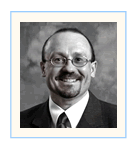 Vincent E. Sagan, P.E., is Senior Staff Engineer for the Metal Buildings Manufacturers Association (MBMA). He is responsible for the administration of metal building industry research and engineering projects, and interacting with United States code and standards organizations. Vince has a Master of Science degree in structural engineering from Cornell University, and over 25 years of experience in all phases of investigation, design, and construction of buildings and other structures. He is a member of the AISI Committee on Specifications for the Design of Cold-Formed Steel Structural Members, and was Chair of the CFSEI Executive Committee.
Vincent E. Sagan, P.E., is Senior Staff Engineer for the Metal Buildings Manufacturers Association (MBMA). He is responsible for the administration of metal building industry research and engineering projects, and interacting with United States code and standards organizations. Vince has a Master of Science degree in structural engineering from Cornell University, and over 25 years of experience in all phases of investigation, design, and construction of buildings and other structures. He is a member of the AISI Committee on Specifications for the Design of Cold-Formed Steel Structural Members, and was Chair of the CFSEI Executive Committee.
11:45 p.m. - 1:30 p.m. - Luncheon and CFSEI Design Awards - Atrium
Design Forum Moderator: Dr. Roger A. LaBoube
Center for Cold-Formed Steel Structures
What are your cold-formed steel design challenges? Come join your colleagues in an open discussion of issues faced by design engineers. Achieving a cost effective design solution is always the engineer’s challenge.
Possible topics: When is ledger framing better than in-line framing? When is torsion really a design consideration? Are tested solutions the only option for shear wall design values?
Bring you design questions and come prepared to join in the discussion!
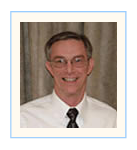 Dr. Roger A. LaBoube is Curator’s Teaching Professor Emeritus of Civil Engineering, Director of the Wei-Wen Yu Center for Cold-Formed Steel Structures at the Missouri University of Science & Technology (formerly University of Missouri-Rolla). Dr. LaBoube holds B.S., M.S., and Ph.D. in Civil Engineering from the University of Missouri-Rolla. Dr. LaBoube has an extensive background in the design and behavior of cold-formed steel structures. His research and design activities have touched on many facets of cold-formed steel construction to include: cold-formed steel beams, panels, trusses, headers, wall studs as well as bolt, weld, and screw connections. Dr. LaBoube is member of the American Iron and Steel Institute’s Committee on Specifications for the North American Specification for the Design of Cold-Formed Steel Structural Members and a member of the AISI Committee on Framing Standards. He is a Registered Professional Engineer in Missouri.
Dr. Roger A. LaBoube is Curator’s Teaching Professor Emeritus of Civil Engineering, Director of the Wei-Wen Yu Center for Cold-Formed Steel Structures at the Missouri University of Science & Technology (formerly University of Missouri-Rolla). Dr. LaBoube holds B.S., M.S., and Ph.D. in Civil Engineering from the University of Missouri-Rolla. Dr. LaBoube has an extensive background in the design and behavior of cold-formed steel structures. His research and design activities have touched on many facets of cold-formed steel construction to include: cold-formed steel beams, panels, trusses, headers, wall studs as well as bolt, weld, and screw connections. Dr. LaBoube is member of the American Iron and Steel Institute’s Committee on Specifications for the North American Specification for the Design of Cold-Formed Steel Structural Members and a member of the AISI Committee on Framing Standards. He is a Registered Professional Engineer in Missouri.
1:30 p.m. - 1:45 p.m. - Break in Exhibit Hall
1:45 p.m. - 2:45 p.m. - Concurrent Sessions
New Design Efforts in Cold-Formed Steel Seismic Design
Benjamin Schafer, Ph.D., P.E.
Johns Hopkins University
A number of changes are currently happening in seismic design for cold-formed steel structures: AISI has a new seismic design standard: AISI-S400, ASCE is developing an update to its ASCE 41 standard that will have significant new provisions for seismic design and rehabilitation of cold-formed steel structures, NEHRP is developing a new document for practicing engineers on cold-formed steel seismic design, and more. This talk will introduce these forthcoming standards and documents, explain some of their background, and provide a brief introduction to seismic design for cold-formed steel structures.
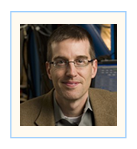 Benjamin Schafer, Ph.D., P.E., is the Swirnow Family Faculty Scholar, Professor, and Chair of the Department of Civil Engineering at Johns Hopkins University. Ben is a past-president of CFSEI, current Chair of the Structural Stability Research Council, Director of the Cold-Formed Steel Research Consortium, and North American Editor for the Journal Thin-walled Structures. He serves on standards committees for both AISI and AISC. Ben worked as a practicing engineer at SGH before starting his academic career, and continues to engage in engineering practice through his research and role as a consultant to NBM Technologies.
Benjamin Schafer, Ph.D., P.E., is the Swirnow Family Faculty Scholar, Professor, and Chair of the Department of Civil Engineering at Johns Hopkins University. Ben is a past-president of CFSEI, current Chair of the Structural Stability Research Council, Director of the Cold-Formed Steel Research Consortium, and North American Editor for the Journal Thin-walled Structures. He serves on standards committees for both AISI and AISC. Ben worked as a practicing engineer at SGH before starting his academic career, and continues to engage in engineering practice through his research and role as a consultant to NBM Technologies.
Noncombustible Cementitious Structural Sheathing
Frank C. Pospisil, P. Eng.
USG Structural Technologies Group
Cementitious structural sheathing panels are noncombustible, dimensionally stable, do not promote mold growth and are lightweight when compared to concrete. They are an excellent sheathing solution for cold-formed steel, whether used as the structural sub-flooring, roof deck or load bearing walls.
This presentation will describe the general properties of cementitious structural sheathing with an emphasis on panel applications on cold-formed steel. It will highlight the unique challenges and benefits the sheathing provides when incorporated into subfloor, roof deck and wall framing designs.
 Frank C. Pospisil, is a structural Civil Engineer having completed his undergraduate degree at the University of Toronto and is currently a registered professional engineer in the Province of Ontario. Frank completed his MBA in Chicago and joined the USG Structural Technologies Group in 2006 to help launch their noncombustible, structural panel.
Frank C. Pospisil, is a structural Civil Engineer having completed his undergraduate degree at the University of Toronto and is currently a registered professional engineer in the Province of Ontario. Frank completed his MBA in Chicago and joined the USG Structural Technologies Group in 2006 to help launch their noncombustible, structural panel.
Over the last ten years Frank has been involved with the development of the structural panel technology, managing test programs, interacting with structural engineers and expanding the use of the USG panel technology, by developing alternate panels for roof deck, foundation and concrete wall applications. Today he is the Technical Sales Manager for the USG Structural Solutions Division.
2:45 p.m. - 3:15 p.m. - Break in Exhibit Hall
Exhibits Close at 3:15 p.m.
3:30 p.m. - 4:30 p.m. - Concurrent Sessions
So, Where Do I Find a Design Example?
Dr. Roger A. LaBoube
Center for Cold-Formed Steel Structures
A frequently asked question from the CFSEI Hotline is “Where do I find a design example?” This presentation will answer this question by reviewing the recently completed AISI D110-16, Cold-Formed Steel Framing Design Guide, which was updated to AISI S100-2012, AISI S240-2015 and expanded to include a design example for ledger framing.
Another excellent source for design examples is the CFSEI Tech Notes. In addition to providing an overview of D110-16, a summary of CFSEI Tech Notes will also be addressed by the presentation.
 Dr. Roger A. LaBoube is Curator’s Teaching Professor Emeritus of Civil Engineering, Director of the Wei-Wen Yu Center for Cold-Formed Steel Structures at the Missouri University of Science & Technology (formerly University of Missouri-Rolla). Dr. LaBoube holds B.S., M.S., and Ph.D. in Civil Engineering from the University of Missouri-Rolla. Dr. LaBoube has an extensive background in the design and behavior of cold-formed steel structures. His research and design activities have touched on many facets of cold-formed steel construction to include: cold-formed steel beams, panels, trusses, headers, wall studs as well as bolt, weld, and screw connections. Dr. LaBoube is member of the American Iron and Steel Institute’s Committee on Specifications for the North American Specification for the Design of Cold-Formed Steel Structural Members and a member of the AISI Committee on Framing Standards. He is a Registered Professional Engineer in Missouri.
Dr. Roger A. LaBoube is Curator’s Teaching Professor Emeritus of Civil Engineering, Director of the Wei-Wen Yu Center for Cold-Formed Steel Structures at the Missouri University of Science & Technology (formerly University of Missouri-Rolla). Dr. LaBoube holds B.S., M.S., and Ph.D. in Civil Engineering from the University of Missouri-Rolla. Dr. LaBoube has an extensive background in the design and behavior of cold-formed steel structures. His research and design activities have touched on many facets of cold-formed steel construction to include: cold-formed steel beams, panels, trusses, headers, wall studs as well as bolt, weld, and screw connections. Dr. LaBoube is member of the American Iron and Steel Institute’s Committee on Specifications for the North American Specification for the Design of Cold-Formed Steel Structural Members and a member of the AISI Committee on Framing Standards. He is a Registered Professional Engineer in Missouri.
Real Life Curtain Wall Framing and Panelization Challenges - I wish I Knew Then What I Know Now!
Dennis Fagent, S.E.
Andrew Zafrin, S.E
ZFA Structural Engineers
Follow the real life journey of a consultant to a CFS subcontractor. This presentation is based on an actual project and the discussion will cover the design and detailing of panelized shop drawings; using third party software in conjunction with inadequate BIM models; sequencing work with other construction trades, incorporating changes from other consultants as the building evolves during a fast-track project; working with minimum architectural and structural detail; waiting for responses to RFIs; communication challenges; detailing and erecting 3-dimensional panels; panelization/construction tolerances and existing conditions; the limits of built-up members vs structural steel - who owns it; internal document management and communication.
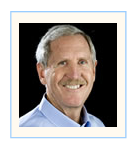 Dennis Fagent, S.E., has been a principal with ZFA Structural Engineers for over 20 years and a practicing engineer for over forty years. ZFA has 4 offices in Northern California that support 50 employees. He is a licensed Structural Engineer in California and ten other states, holding a Bachelor of Science in Engineering from UCLA. Dennis is the President of the West Chapter of the Cold-Formed Steel Engineers Institute, a member of the Structural Engineers Association of Northern California, the Construction Specifications Institute, the Lean Construction Institute, American Institute of Steel Construction, and the California Society for Hospital Engineers. He has been involved in the design of both residential and commercial cold-formed projects throughout the United States and Canada. His primary interest is in the incorporation of panelization into the construction of cold-formed steel structures and has made presentations regarding panelization at the 2013 CFSEI EXPO and Redwood Empire Chapter of AIA.
Dennis Fagent, S.E., has been a principal with ZFA Structural Engineers for over 20 years and a practicing engineer for over forty years. ZFA has 4 offices in Northern California that support 50 employees. He is a licensed Structural Engineer in California and ten other states, holding a Bachelor of Science in Engineering from UCLA. Dennis is the President of the West Chapter of the Cold-Formed Steel Engineers Institute, a member of the Structural Engineers Association of Northern California, the Construction Specifications Institute, the Lean Construction Institute, American Institute of Steel Construction, and the California Society for Hospital Engineers. He has been involved in the design of both residential and commercial cold-formed projects throughout the United States and Canada. His primary interest is in the incorporation of panelization into the construction of cold-formed steel structures and has made presentations regarding panelization at the 2013 CFSEI EXPO and Redwood Empire Chapter of AIA.
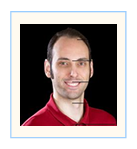 Andrew Zafrin, S.E, is an associate at ZFA Structural Engineers. He obtained his Bachelor of Science in Architectural Engineering from California Polytechnic State University in San Luis Obispo. He has been with ZFA since 2005 where his expertise lies in the technological aspects of structural design, making use of Autodesk Revit software to configure, analyze, and provide construction support for structures of high technical difficulty. These structures range from ultra-modern residences to traditional commercial projects; from educational facilities to hospitals and other public structures. In addition to the conventional construction methods and materials, Mr. Zafrin has designed cold-formed panelized framing systems and has designed with experimental building materials with consideration of reduced construction waste and renewable resources. Throughout Mr. Zafrin’s tenure at ZFA, he has also been involved in the industrial and energy sector, working closely with top power generation industry companies and their associated vendor companies all over the world. He has completed the State of California CAL EMA Safety Assessment Program and is on the earthquake response team for Pacific Gas & Electric.
Andrew Zafrin, S.E, is an associate at ZFA Structural Engineers. He obtained his Bachelor of Science in Architectural Engineering from California Polytechnic State University in San Luis Obispo. He has been with ZFA since 2005 where his expertise lies in the technological aspects of structural design, making use of Autodesk Revit software to configure, analyze, and provide construction support for structures of high technical difficulty. These structures range from ultra-modern residences to traditional commercial projects; from educational facilities to hospitals and other public structures. In addition to the conventional construction methods and materials, Mr. Zafrin has designed cold-formed panelized framing systems and has designed with experimental building materials with consideration of reduced construction waste and renewable resources. Throughout Mr. Zafrin’s tenure at ZFA, he has also been involved in the industrial and energy sector, working closely with top power generation industry companies and their associated vendor companies all over the world. He has completed the State of California CAL EMA Safety Assessment Program and is on the earthquake response team for Pacific Gas & Electric.


 Jeff Klaiman has over 20 years of experience in the construction industry. His responsibilities include building maintenance and engineering; on-site engineering for a concrete contractor; Manager of Technical Services and Versa-Truss Product Manager for Dale/Incor (national manufacturer of cold-formed steel framing products and systems), participation on American Iron and Steel Institute’s Committee on Specifications for the Design of Cold-Formed Steel Structural Members and Committee on Framing Standards; a member of the Light Gauge Steel Engineers Association for more than 10 years; ASTM International and the Steel Framing Alliance. Mr. Klaiman serves as chairman of the Standard Practices Subcommittee of the AISI Committee on Framing Standards and is also the president of the Mid-Atlantic Steel Framing Alliance. He is a past president of the Cold-Formed Steel Engineers Institute. In his position at ADTEK Engineers, Inc. as Principal in Charge of Specialty Engineering, Mr. Klaiman oversees the design and coordination of all cold-formed steel design documents. He also manages in-house staff in three offices for cold-formed steel framing design, develops project schedules, and coordinates quality control reviews with project managers on his team. Mr. Klaiman holds a bachelor’s degree in Civil Engineering from the University of Michigan, and an MBA from Eastern Michigan University.
Jeff Klaiman has over 20 years of experience in the construction industry. His responsibilities include building maintenance and engineering; on-site engineering for a concrete contractor; Manager of Technical Services and Versa-Truss Product Manager for Dale/Incor (national manufacturer of cold-formed steel framing products and systems), participation on American Iron and Steel Institute’s Committee on Specifications for the Design of Cold-Formed Steel Structural Members and Committee on Framing Standards; a member of the Light Gauge Steel Engineers Association for more than 10 years; ASTM International and the Steel Framing Alliance. Mr. Klaiman serves as chairman of the Standard Practices Subcommittee of the AISI Committee on Framing Standards and is also the president of the Mid-Atlantic Steel Framing Alliance. He is a past president of the Cold-Formed Steel Engineers Institute. In his position at ADTEK Engineers, Inc. as Principal in Charge of Specialty Engineering, Mr. Klaiman oversees the design and coordination of all cold-formed steel design documents. He also manages in-house staff in three offices for cold-formed steel framing design, develops project schedules, and coordinates quality control reviews with project managers on his team. Mr. Klaiman holds a bachelor’s degree in Civil Engineering from the University of Michigan, and an MBA from Eastern Michigan University. Gary Engleman started with Simpson Strong-Tie as the Mid-Atlantic Anchor Systems Technical Representative in June 2010. Gary has been involved with the post-installed anchor industry in Maryland, Virginia, and Washington, DC for over 25 years. Prior to coming aboard with Simpson Strong-Tie, Gary spent ten years developing relationships with distributors, engineers, and contractors as a Territory Manager for Powers Fasteners. Gary’s experience, product knowledge and understand of the anchor market earned him the prestigious Hough B. Oliphant Award in September 2011. Gary is currently the Senior Technical Representative for all Industrial, Commercial, and Infrastructure products and project in Maryland, Virginia, and Washington, DC. Gary provides training and testing for contractors as well as continuing education for the design community on behalf of Simpson Strong-Tie accredited through IACET and AIA. Associations Gary is involved with include; Mid-Atlantic Steel Framing Alliance, American Concrete Institute, International Concrete Repair Institute, and Architecture – Construction – Engineering Mentor Program. Within Simpson Strong-Tie, Gary is part of the National Sales and Marketing Alliance Committee and the Northeast Senior ICI Leadership Team where he takes on training and mentoring Technical Representatives throughout 24 states.
Gary Engleman started with Simpson Strong-Tie as the Mid-Atlantic Anchor Systems Technical Representative in June 2010. Gary has been involved with the post-installed anchor industry in Maryland, Virginia, and Washington, DC for over 25 years. Prior to coming aboard with Simpson Strong-Tie, Gary spent ten years developing relationships with distributors, engineers, and contractors as a Territory Manager for Powers Fasteners. Gary’s experience, product knowledge and understand of the anchor market earned him the prestigious Hough B. Oliphant Award in September 2011. Gary is currently the Senior Technical Representative for all Industrial, Commercial, and Infrastructure products and project in Maryland, Virginia, and Washington, DC. Gary provides training and testing for contractors as well as continuing education for the design community on behalf of Simpson Strong-Tie accredited through IACET and AIA. Associations Gary is involved with include; Mid-Atlantic Steel Framing Alliance, American Concrete Institute, International Concrete Repair Institute, and Architecture – Construction – Engineering Mentor Program. Within Simpson Strong-Tie, Gary is part of the National Sales and Marketing Alliance Committee and the Northeast Senior ICI Leadership Team where he takes on training and mentoring Technical Representatives throughout 24 states. Jon-Paul Cardin, P.E., ran the engineering and quality control department for a major steel framing manufacturer before joining AISI’s construction codes and standards development staff. In such, he was in regular communication with engineers, contractors and inspectors regarding steel framing products and practices. He is a graduate of the University of Idaho with a B.S. Civil Engineering (Structural emphasis) and B.S. Mathematics. Jon-Paul is the author CFSEI TechNote on the splice design of steel studs, and has given 50+ presentations to engineering firms and structural engineering associations regarding CFS design. He is a member of the SEAW Spokane Chapter and ASCE-SEI chapter.
Jon-Paul Cardin, P.E., ran the engineering and quality control department for a major steel framing manufacturer before joining AISI’s construction codes and standards development staff. In such, he was in regular communication with engineers, contractors and inspectors regarding steel framing products and practices. He is a graduate of the University of Idaho with a B.S. Civil Engineering (Structural emphasis) and B.S. Mathematics. Jon-Paul is the author CFSEI TechNote on the splice design of steel studs, and has given 50+ presentations to engineering firms and structural engineering associations regarding CFS design. He is a member of the SEAW Spokane Chapter and ASCE-SEI chapter. Robert Warr, P.E., is the owner of Frameworks Engineering, LLC and has been a Director and VP of two highly prominent metal producing manufacturing facilities, Mr. Warr has spent his career studying building structures and material designs in cold-formed steel framing. Mr. Warr continues his passion as a business leader today in his current role as VP of Operations for DSi. He has given back to the steel industry by serving on many committees including his role as (past) president of the Atlanta/SE Chapter of the Cold-Formed Steel Engineers Institute, the largest CFSEI chapter in the nation. Mr. Warr holds a Masters Degree in Structural Engineering from the University of Alabama at Birmingham. He is registered in 48 States and is a LEED Accredited Professional.
Robert Warr, P.E., is the owner of Frameworks Engineering, LLC and has been a Director and VP of two highly prominent metal producing manufacturing facilities, Mr. Warr has spent his career studying building structures and material designs in cold-formed steel framing. Mr. Warr continues his passion as a business leader today in his current role as VP of Operations for DSi. He has given back to the steel industry by serving on many committees including his role as (past) president of the Atlanta/SE Chapter of the Cold-Formed Steel Engineers Institute, the largest CFSEI chapter in the nation. Mr. Warr holds a Masters Degree in Structural Engineering from the University of Alabama at Birmingham. He is registered in 48 States and is a LEED Accredited Professional. Jeff Ellis, PE, SE, SECB, Director of Codes & Compliance for Simpson Strong-Tie Company Inc. has more than 24 years of experience in the construction industry and manages the company codes and compliance efforts. Additionally, he is involved in research and development and provides support for existing product lines, including technical guidance for connectors, fastening systems, and lateral force resisting systems. He was a practicing design engineer for commercial, residential and forensic projects for more than 9 years prior to joining Simpson at the end of 2000. He is currently serving as President-Elect for the Structural Engineers Association of Southern California (SEAOSC), as a SEAOC Director, and as a member of the International Code Council Evaluation Service Board of Managers. He served two years as chairman of the SEAOSC Buildings At Risk Summit Committee, three years as a chairman of the AISI COFS Lateral Design Subcommittee, and four years on the Cold-Formed Steel Engineers Institute (CFSEI) Board of Directors, with one year as president.
Jeff Ellis, PE, SE, SECB, Director of Codes & Compliance for Simpson Strong-Tie Company Inc. has more than 24 years of experience in the construction industry and manages the company codes and compliance efforts. Additionally, he is involved in research and development and provides support for existing product lines, including technical guidance for connectors, fastening systems, and lateral force resisting systems. He was a practicing design engineer for commercial, residential and forensic projects for more than 9 years prior to joining Simpson at the end of 2000. He is currently serving as President-Elect for the Structural Engineers Association of Southern California (SEAOSC), as a SEAOC Director, and as a member of the International Code Council Evaluation Service Board of Managers. He served two years as chairman of the SEAOSC Buildings At Risk Summit Committee, three years as a chairman of the AISI COFS Lateral Design Subcommittee, and four years on the Cold-Formed Steel Engineers Institute (CFSEI) Board of Directors, with one year as president.  Bill Babich, P.E. is the Director of Engineering for TrusSteel. TrusSteel is a provider of Cold-Formed Steel (CFS) truss engineering and technology utilizing the proprietary TrusSteel system. He has been involved in the prefabricated truss industry for the last 30 years and specifically with the CFS industry since 1997. Bill is a member of the American Society of Civil Engineers (ASCE), the AISI Committee on Framing Standards (COFS) and the Cold-Formed Steel Engineers Institute (CFSEI). He is the past-chairman of the AISI COFS Truss Subcommittee and a past chairman of the CFSEI Executive Committee.
Bill Babich, P.E. is the Director of Engineering for TrusSteel. TrusSteel is a provider of Cold-Formed Steel (CFS) truss engineering and technology utilizing the proprietary TrusSteel system. He has been involved in the prefabricated truss industry for the last 30 years and specifically with the CFS industry since 1997. Bill is a member of the American Society of Civil Engineers (ASCE), the AISI Committee on Framing Standards (COFS) and the Cold-Formed Steel Engineers Institute (CFSEI). He is the past-chairman of the AISI COFS Truss Subcommittee and a past chairman of the CFSEI Executive Committee. Nabil A. Rahman, Ph.D., P.E. is the Director of Engineering and R&D for The Steel Network, Inc. and a Principal at FDR Engineers in Durham, NC. He is the current chairman of ASCE-SEI Committee on Cold-Formed Steel Structures and a past chairman of the Cold-Formed Steel Engineers Institute (CFSEI). Dr. Rahman has vast experience in CFS design, product development, software development, as well as the analysis and protection of structures against extreme loads (progressive collapse, blast, Impact). He serves as a member of the Committee on Specification and Committee on Framing of the American Iron and Steel Institute (AISI), and a member of ASCE Committee on Disproportionate Collapse. He is a named inventor on seven US patents, the technical director of one of the top-used software in the US for the design of cold-formed steel components, and the author of over 50 research papers and technical notes.
Nabil A. Rahman, Ph.D., P.E. is the Director of Engineering and R&D for The Steel Network, Inc. and a Principal at FDR Engineers in Durham, NC. He is the current chairman of ASCE-SEI Committee on Cold-Formed Steel Structures and a past chairman of the Cold-Formed Steel Engineers Institute (CFSEI). Dr. Rahman has vast experience in CFS design, product development, software development, as well as the analysis and protection of structures against extreme loads (progressive collapse, blast, Impact). He serves as a member of the Committee on Specification and Committee on Framing of the American Iron and Steel Institute (AISI), and a member of ASCE Committee on Disproportionate Collapse. He is a named inventor on seven US patents, the technical director of one of the top-used software in the US for the design of cold-formed steel components, and the author of over 50 research papers and technical notes. Don Allen, P.E. currently serves as Director of Engineering for Super Stud Building Products, Inc., where oversees product development, testing, engineering, and technical services. Having worked in the cold-formed steel (CFS) industry since 1990, Allen has worked as a CFS specialty engineer, Engineer of Record, and industry representative, before his current position with a stud manufacturer. Mr. Allen concurrently served for more than 9 years as Technical Director for three associations in the cold-formed steel industry: the Steel Stud Manufacturers Association (SSMA), the Steel Framing Alliance (SFA), and the Cold-Formed Steel Engineers Institute (CFSEI). He chairs the Education Subcommittee of the American Iron and Steel Institute’s Committee on Framing Standards and Committee on Specifications, and was the 2013 recipient of the CFSEI Distinguished Service Award. He has given presentations on CFS in China, Colombia, Egypt, Hawaii, and South Africa, and has been involved in design projects in North America, Africa, and Europe.
Don Allen, P.E. currently serves as Director of Engineering for Super Stud Building Products, Inc., where oversees product development, testing, engineering, and technical services. Having worked in the cold-formed steel (CFS) industry since 1990, Allen has worked as a CFS specialty engineer, Engineer of Record, and industry representative, before his current position with a stud manufacturer. Mr. Allen concurrently served for more than 9 years as Technical Director for three associations in the cold-formed steel industry: the Steel Stud Manufacturers Association (SSMA), the Steel Framing Alliance (SFA), and the Cold-Formed Steel Engineers Institute (CFSEI). He chairs the Education Subcommittee of the American Iron and Steel Institute’s Committee on Framing Standards and Committee on Specifications, and was the 2013 recipient of the CFSEI Distinguished Service Award. He has given presentations on CFS in China, Colombia, Egypt, Hawaii, and South Africa, and has been involved in design projects in North America, Africa, and Europe. Vincent E. Sagan, P.E., is Senior Staff Engineer for the Metal Buildings Manufacturers Association (MBMA). He is responsible for the administration of metal building industry research and engineering projects, and interacting with United States code and standards organizations. Vince has a Master of Science degree in structural engineering from Cornell University, and over 25 years of experience in all phases of investigation, design, and construction of buildings and other structures. He is a member of the AISI Committee on Specifications for the Design of Cold-Formed Steel Structural Members, and was Chair of the CFSEI Executive Committee.
Vincent E. Sagan, P.E., is Senior Staff Engineer for the Metal Buildings Manufacturers Association (MBMA). He is responsible for the administration of metal building industry research and engineering projects, and interacting with United States code and standards organizations. Vince has a Master of Science degree in structural engineering from Cornell University, and over 25 years of experience in all phases of investigation, design, and construction of buildings and other structures. He is a member of the AISI Committee on Specifications for the Design of Cold-Formed Steel Structural Members, and was Chair of the CFSEI Executive Committee. Dr. Roger A. LaBoube is Curator’s Teaching Professor Emeritus of Civil Engineering, Director of the Wei-Wen Yu Center for Cold-Formed Steel Structures at the Missouri University of Science & Technology (formerly University of Missouri-Rolla). Dr. LaBoube holds B.S., M.S., and Ph.D. in Civil Engineering from the University of Missouri-Rolla. Dr. LaBoube has an extensive background in the design and behavior of cold-formed steel structures. His research and design activities have touched on many facets of cold-formed steel construction to include: cold-formed steel beams, panels, trusses, headers, wall studs as well as bolt, weld, and screw connections. Dr. LaBoube is member of the American Iron and Steel Institute’s Committee on Specifications for the North American Specification for the Design of Cold-Formed Steel Structural Members and a member of the AISI Committee on Framing Standards. He is a Registered Professional Engineer in Missouri.
Dr. Roger A. LaBoube is Curator’s Teaching Professor Emeritus of Civil Engineering, Director of the Wei-Wen Yu Center for Cold-Formed Steel Structures at the Missouri University of Science & Technology (formerly University of Missouri-Rolla). Dr. LaBoube holds B.S., M.S., and Ph.D. in Civil Engineering from the University of Missouri-Rolla. Dr. LaBoube has an extensive background in the design and behavior of cold-formed steel structures. His research and design activities have touched on many facets of cold-formed steel construction to include: cold-formed steel beams, panels, trusses, headers, wall studs as well as bolt, weld, and screw connections. Dr. LaBoube is member of the American Iron and Steel Institute’s Committee on Specifications for the North American Specification for the Design of Cold-Formed Steel Structural Members and a member of the AISI Committee on Framing Standards. He is a Registered Professional Engineer in Missouri. Benjamin Schafer, Ph.D., P.E., is the Swirnow Family Faculty Scholar, Professor, and Chair of the Department of Civil Engineering at Johns Hopkins University. Ben is a past-president of CFSEI, current Chair of the Structural Stability Research Council, Director of the Cold-Formed Steel Research Consortium, and North American Editor for the Journal Thin-walled Structures. He serves on standards committees for both AISI and AISC. Ben worked as a practicing engineer at SGH before starting his academic career, and continues to engage in engineering practice through his research and role as a consultant to NBM Technologies.
Benjamin Schafer, Ph.D., P.E., is the Swirnow Family Faculty Scholar, Professor, and Chair of the Department of Civil Engineering at Johns Hopkins University. Ben is a past-president of CFSEI, current Chair of the Structural Stability Research Council, Director of the Cold-Formed Steel Research Consortium, and North American Editor for the Journal Thin-walled Structures. He serves on standards committees for both AISI and AISC. Ben worked as a practicing engineer at SGH before starting his academic career, and continues to engage in engineering practice through his research and role as a consultant to NBM Technologies. Frank C. Pospisil, is a structural Civil Engineer having completed his undergraduate degree at the University of Toronto and is currently a registered professional engineer in the Province of Ontario. Frank completed his MBA in Chicago and joined the USG Structural Technologies Group in 2006 to help launch their noncombustible, structural panel.
Frank C. Pospisil, is a structural Civil Engineer having completed his undergraduate degree at the University of Toronto and is currently a registered professional engineer in the Province of Ontario. Frank completed his MBA in Chicago and joined the USG Structural Technologies Group in 2006 to help launch their noncombustible, structural panel. Dennis Fagent, S.E., has been a principal with ZFA Structural Engineers for over 20 years and a practicing engineer for over forty years. ZFA has 4 offices in Northern California that support 50 employees. He is a licensed Structural Engineer in California and ten other states, holding a Bachelor of Science in Engineering from UCLA. Dennis is the President of the West Chapter of the Cold-Formed Steel Engineers Institute, a member of the Structural Engineers Association of Northern California, the Construction Specifications Institute, the Lean Construction Institute, American Institute of Steel Construction, and the California Society for Hospital Engineers. He has been involved in the design of both residential and commercial cold-formed projects throughout the United States and Canada. His primary interest is in the incorporation of panelization into the construction of cold-formed steel structures and has made presentations regarding panelization at the 2013 CFSEI EXPO and Redwood Empire Chapter of AIA.
Dennis Fagent, S.E., has been a principal with ZFA Structural Engineers for over 20 years and a practicing engineer for over forty years. ZFA has 4 offices in Northern California that support 50 employees. He is a licensed Structural Engineer in California and ten other states, holding a Bachelor of Science in Engineering from UCLA. Dennis is the President of the West Chapter of the Cold-Formed Steel Engineers Institute, a member of the Structural Engineers Association of Northern California, the Construction Specifications Institute, the Lean Construction Institute, American Institute of Steel Construction, and the California Society for Hospital Engineers. He has been involved in the design of both residential and commercial cold-formed projects throughout the United States and Canada. His primary interest is in the incorporation of panelization into the construction of cold-formed steel structures and has made presentations regarding panelization at the 2013 CFSEI EXPO and Redwood Empire Chapter of AIA. Andrew Zafrin, S.E, is an associate at ZFA Structural Engineers. He obtained his Bachelor of Science in Architectural Engineering from California Polytechnic State University in San Luis Obispo. He has been with ZFA since 2005 where his expertise lies in the technological aspects of structural design, making use of Autodesk Revit software to configure, analyze, and provide construction support for structures of high technical difficulty. These structures range from ultra-modern residences to traditional commercial projects; from educational facilities to hospitals and other public structures. In addition to the conventional construction methods and materials, Mr. Zafrin has designed cold-formed panelized framing systems and has designed with experimental building materials with consideration of reduced construction waste and renewable resources. Throughout Mr. Zafrin’s tenure at ZFA, he has also been involved in the industrial and energy sector, working closely with top power generation industry companies and their associated vendor companies all over the world. He has completed the State of California CAL EMA Safety Assessment Program and is on the earthquake response team for Pacific Gas & Electric.
Andrew Zafrin, S.E, is an associate at ZFA Structural Engineers. He obtained his Bachelor of Science in Architectural Engineering from California Polytechnic State University in San Luis Obispo. He has been with ZFA since 2005 where his expertise lies in the technological aspects of structural design, making use of Autodesk Revit software to configure, analyze, and provide construction support for structures of high technical difficulty. These structures range from ultra-modern residences to traditional commercial projects; from educational facilities to hospitals and other public structures. In addition to the conventional construction methods and materials, Mr. Zafrin has designed cold-formed panelized framing systems and has designed with experimental building materials with consideration of reduced construction waste and renewable resources. Throughout Mr. Zafrin’s tenure at ZFA, he has also been involved in the industrial and energy sector, working closely with top power generation industry companies and their associated vendor companies all over the world. He has completed the State of California CAL EMA Safety Assessment Program and is on the earthquake response team for Pacific Gas & Electric.